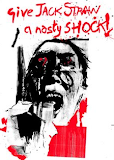Paris/ French Street wars - Shadrach Woods and The Man In The Street
 Shadrach Woods was pupil of Corbusier, He formed a partnership with George Candilis, and Alex Josic and was responsible for buildings urban areas in Morocco and Algeria,. Famously they built Toulouse le Maireau and the Berlin Free University.
Shadrach Woods was pupil of Corbusier, He formed a partnership with George Candilis, and Alex Josic and was responsible for buildings urban areas in Morocco and Algeria,. Famously they built Toulouse le Maireau and the Berlin Free University.
Woods wrote the essential book (well it is for me) for understanding the modern city ,“The Man in the Street” A Polemic on urbanism, it was available in the mid – 70’s as a Penguin but no longer, the recently published book by Tom Avermaete, Another Modern, The Post-War Arch-itecture and Urbanism of Candilis-Josic-Woods Nai Publishers Rotterdam Paperback, 432 pages / ISBN 90-5662-473-3, € 42.00 helps put their work in perspective.
The Man in the Street is the tale of the urban space that we all, rich or poor, young or old, do inhabit at some time; where we find a place to live out our destiny in its houses , factories, offices, schools, buses, and streets. A series of questions might be asked. The question is, who shall decide, govern and profit from the machines that cities are? (Vide Corbusier "a house is a machine for living")
There is the current answer, the national rulers. (Central Government Grants – with ring fences, targets etc.,)
Woods hoped for another possibility: The man in the street, in the city.
The question ? What will be the basis of the city system? The traditional answer is, one one hand the system of speculation and privilege, the other, disenfranchisement despair and poverty.
There could be another answer, a system of communal action and tranquillity, public service and shared amenities. The question is, what form shall the city take? The traditional answer is the centric city with power concentrations and suburban dispersal, slightly modified into a automotive megapolitan mess with peripheral power concentrations and more widespread dispersal.
Another answer might be the communal, non-hierarchical, continuous, de-centered city of integrated, close-by activities designed for human intercourse restoring neighborliness and urbanity as human pursuits. This vision is the city that Shadrach Woods described, in words and maps, and that he made in his buildings.
Read his book and the problems of the city he outlined – mainly from a French perspective with a deep knowledge of the North African diaspora – and the riots in France were foreseen 30 years ago.
Deterioration and squalor he saw as a variety of urban chaos, interacting negatively with efficiency, safety and liveability. The public realm is particularly damaged by the violence of decay and collapse: "we have been unable to create and maintain even a minimum standard of environmental decency across any of our western cities." In addition, pollution of the public air, water and and sound-space has proceeded apace. Overcrowding is endemic in the ghettos of the poor and a common feature of middle class redoubts, (brown field site congestion, overloaded roads) adding to the forces of deterioration and abuse of every part of the urban fabric.
In a struggle for power and growth, human values become perverted: the bureaucrat becomes timid and power hungry, public service is demeaned, jobs lose their value in the interest of consumption, love of country becomes the chauvinism of the military state or the nationalism of hatred, the man in the street is disenfranchised from the planning process and is set against his neighbor in the struggle for economic power.
Woods' description of the problems that the city was facing was a mild tonic compared to his outcry at the shortcomings of our society: a society that he saw as devoted to endless economic development - with expansion and exploitation joined together; top of the heap individualism; management by overwhelmed, unresponsive bureaucrats (Surely not ?); rabid nationalism (BNP, Le Pen, Islam); and misuse of resources on a global scale. He saw the city as the front-line battlefield in this societal system, where interest groups, ethnic or economic or both devoted the lion's share of the worlds resources to the seizure and maintenance of their own hegemony. (Sound familiar)
On November 14th his personal Archive is being donated to Columbia University NY NY and his work celebrated with seminars, talks, and a massive exhibition.
Recent blogs on same topic here

No comments:
Post a Comment